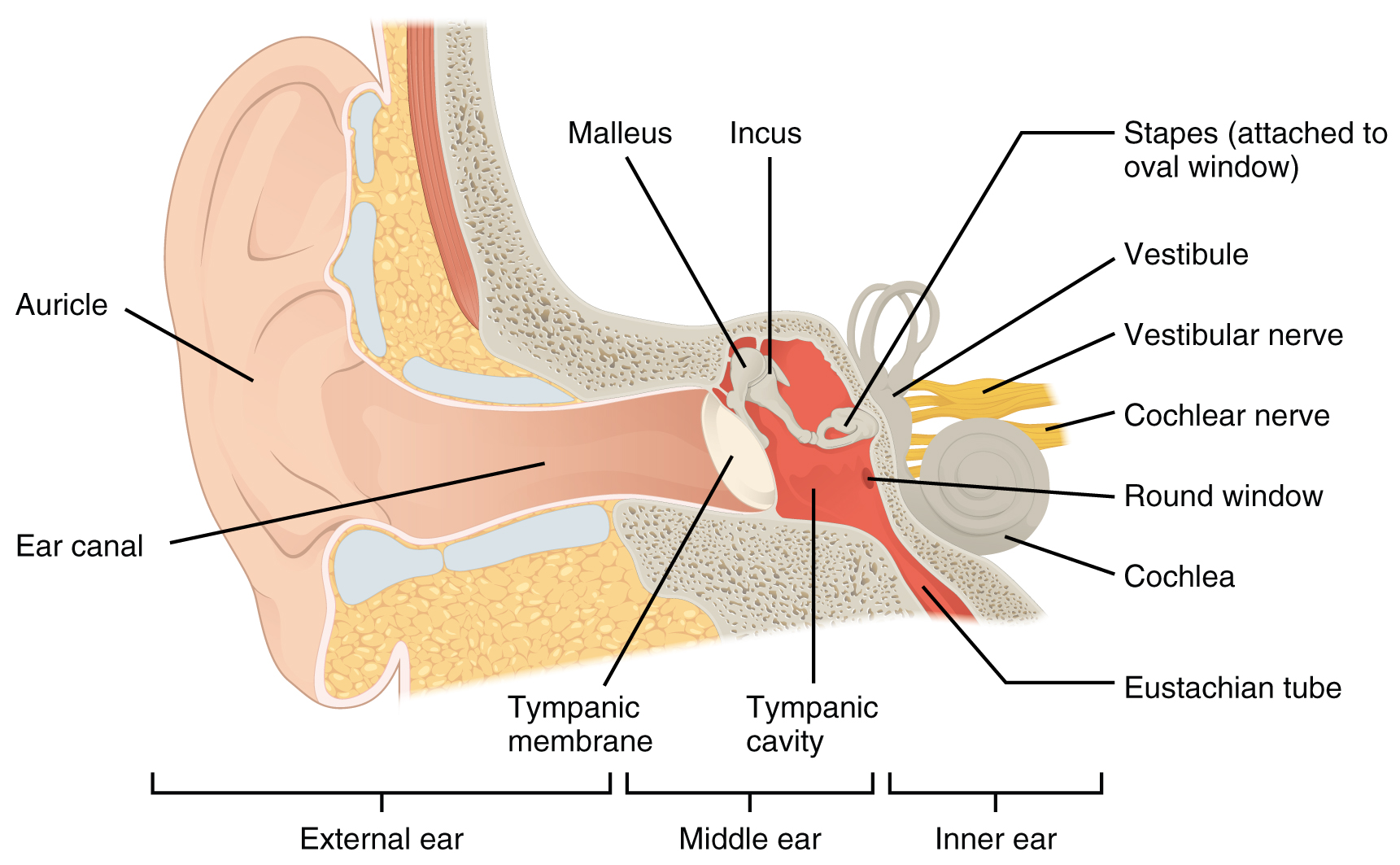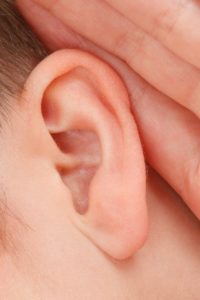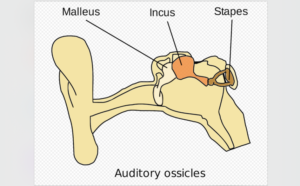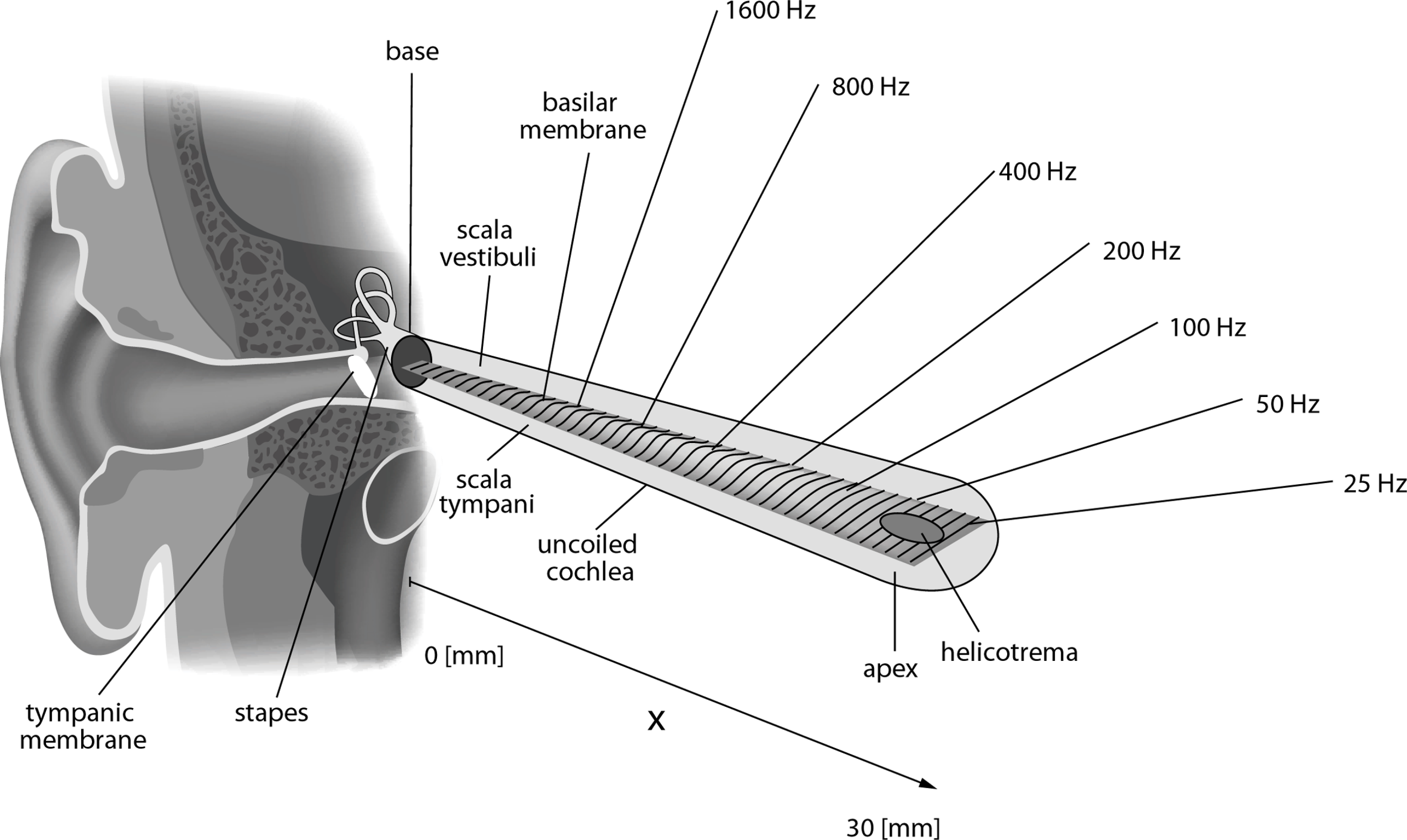
Image by Robin Higgins from Pixabay
Hearing works by converting sound into signals to the brain.
To begin understanding how hearing works, the first thing to understand is how sounds travel. Sounds are pressure waves that move through a substance (usually air!). Our ears and brains let us understand these pressure changes as music, language, or ambulance sirens.

By Christophe Dang Ngoc Chan (cdang) – Own work, CC BY-SA 3.0, Link

By OpenStax – https://cnx.org, CC BY 4.0, Link
The ear has three main parts: the outer ear, the middle ear, and the inner ear.

Image by PublicDomainPictures from Pixabay
The outer ear contains the pinna, which is the part of the ear we can see from the outside, and the ear canal.
The pinna acts like a funnel and helps direct the sound into the ear (you can roll up a piece of paper and hold it to your ear to get a sense of how this works!) The sound waves travel down the ear canal to the ear drum, called the tympanic membrane. The ear canal is slightly s-shaped, very narrow at certain points, and waxy. These features help protect the more delicate parts of the ear (like the ear drum) from e.g. dirt, bugs, and pencils (or other things we might try to stick in our ears).

By Illu auditory ossicles.jpg: US Government (original);SVG version: Angelito7 (talk) – Illu auditory ossicles.jpg, Public Domain, Link
The middle ear contains the ear drum and three tiny bones (the malleus, the incus, and the stapes–which respectively mean hammer, anvil, and stirrup). When the sound waves reach the ear drum, the ear drum vibrates against the bones. Vibrating against these bones helps make the sound louder. When the ear drum vibrates quickly against the bones, we perceive the sound to have a higher pitch.

Image by LoggaWiggler from Pixabay
The bones carry mechanical energy into the inner ear. This contains the cochlea, the auditory nerve, and the organs primarily used for balance. The cochlea is our primary hearing organ, and it’s filled with fluid and rolled up like a snail shell.
The cochlea is organized so that different parts of it respond to different tones. This is called tonotopy. Sound travels along the spiral towards the center of the cochlea.
Very high-pitched sounds vibrate near the entrance to the cochlea, and very low-pitched sounds vibrate near the center.
Hair cells in the cochlea pick up these vibrations and send them to the brain via the auditory nerve, where we interpret these different sounds as rock music, speech, or rustling leaves.

By Kern A, Heid C, Steeb W-H, Stoop N, Stoop R – Biophysical Parameters Modification Could Overcome Essential Hearing Gaps (1), CC BY 2.5, Link
“Different parts of the
cochlea respond to different tones. This is called tonotopy.“

Erin Campbell
Author
Erin is a Ph.D. student in the Bergelson lab at Duke University, where she studies how young children who are Deaf or blind learn language.
